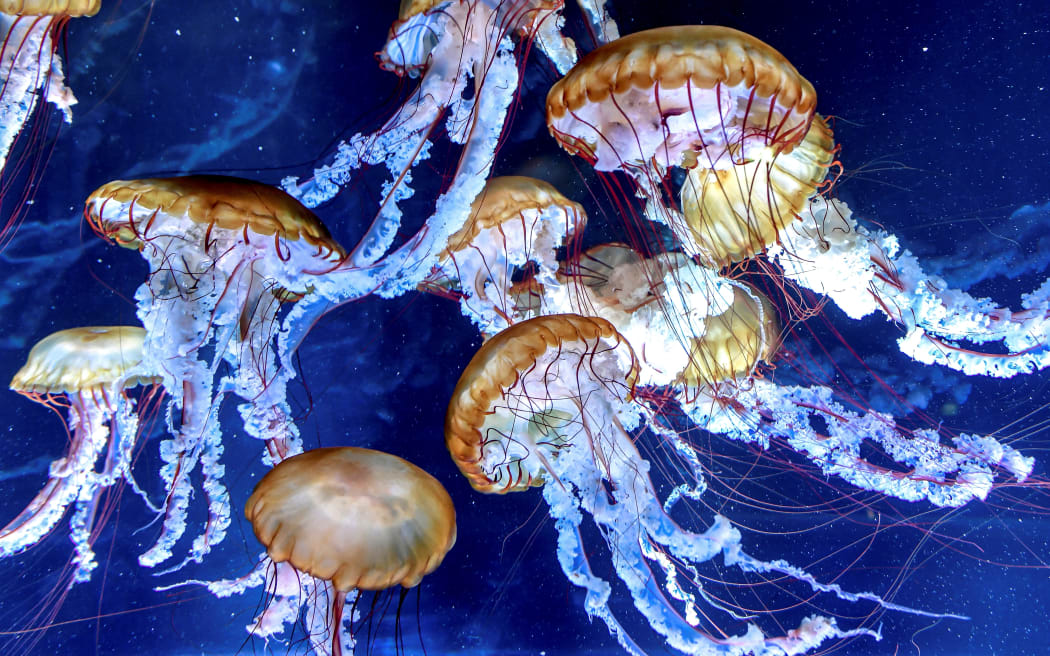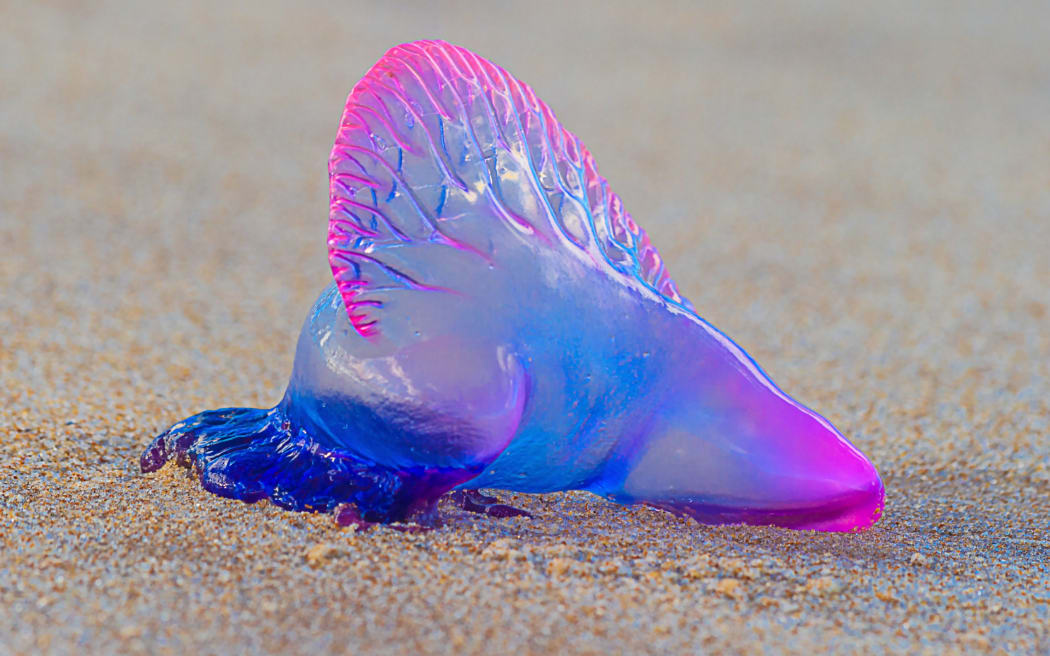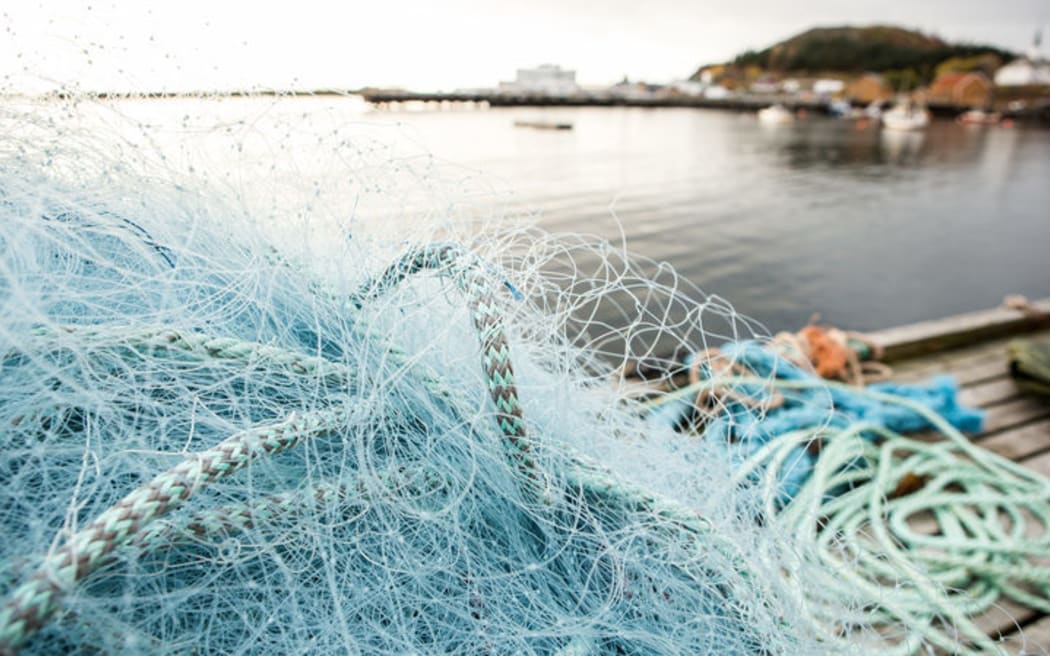
Jellyfish population explosions tip the balance of ocean ecosystems, and have the potential to harm biodiversity. Photo: PHILIPPE HUGUEN/AFP
In the summer of 2013, Stefano Piraino was strolling along the rocky shoreline of Ustica, a small island off the coast of Sicily, when he spotted a washed-up jellyfish. He stooped down and prodded it. Then, in an impromptu moment, he tore off a piece and popped it in his mouth. It was salty, crunchy and crispy from the sun.
"[It was] very tasty," remembers Piraino, a zoologist and evolutionary biologist at the University of Salento in Lecce, Italy. "It was the first time I had eaten one."
After a few days of lying on the shore their stinging cells are deactivated, Piraino explained. Still, he deters anyone from eating jellyfish straight out of the sea, because raw jellyfish contains bacterial pathogens that can cause food poisoning - although in his case any bacteria should have been killed off by UV radiation from the sun.
Nevertheless, Piraino is an advocate for seeing more of the invertebrates on the menu. This is a possibility that researchers are exploring in the face of decimated fish populations and an increasing global food crisis.
The problem
Recently, there have been numerous reports of jellyfish blooms - seasonal events where there is a large and sudden increase in jellyfish numbers. These population explosions tip the balance of ocean ecosystems, and have the potential to harm biodiversity and reduce fish stocks.
If we do not act to curb current blooms, the ocean will flip from being dominated by fish biodiversity to an ecosystem ruled by jellyfish, a 2009 research paper warned. The theory is hotly disputed - some scientists said there was no evidence for a global increase in their numbers. For example, one long-term analysis from 2012 found that there was no robust evidence for an increase in jellyfish, and suggested that their populations may undergo oscillation cycles that last around 20 years.
However, there is little doubt that blooms were becoming more common in some locations, and they could have severe consequences for marine - and human - life. So, if jellyfish can pose such a threat to our oceans and global food security, then why not just eat them?
Jellyfish reproduce extremely rapidly. Some species even have near-immortal properties: Turritopsis nutricula can evade death by turning back into a less mature version of itself (known as a polyp) when injured, a process analogous to a butterfly transforming back into a caterpillar. The polyp can then produce identical copies of itself, so the jellyfish could theoretically live indefinitely.
This is just one example of the extreme adaptability and resilience of jellyfish, which have been around for 500 million years. Jellyfish can bide their time until favourable reproductive conditions arise, lying on the ocean floor for years in their polyp state, maturing and spawning only when conditions are right.
Jellyfish are also able to benefit from human activities that harm other kinds of marine life. Jellyfish need very little oxygen to survive. As a result, unlike other marine life, jellyfish can thrive in waters hit by agricultural runoff, which reduces oxygen levels in seawater.
Unfortunately, when jellyfish thrive there can be knock-on effects. Once jellyfish move into an area, it is difficult for other species to recolonise even after oxygen levels return to normal - jellyfish love to feast on fish larvae.
It has been difficult to predict exactly how jellyfish will behave in a warmer climate, because there is not a lot of historical data on them, explains Monty Graham, director of the Florida Institute of Oceanography in St. Petersburg. "A few decades ago, no-one was really paying attention to jellyfish," he said. "But jellyfish are very sensitive to climate cycles. And so by extension they'll be very sensitive to long-term climate changes as well."
Historically, jellyfish have historically been kept in check by marine predators, such as seabirds, sea turtles, fish and whales. However, their predator populations have been dwindling, thanks to a combination of factors including overfishing, climate change, pollution, and habitat loss.
Across the globe, jellyfish outbreaks have been wreaking havoc on fish populations, and the fishing and tourism industries, to name a few. In 2007, the entire Irish salmon industry was wiped out by a plague of millions of jellyfish covering 26 sq km and 35 ft (10.7m) deep. They swarmed the cages of farmed salmon, killing more than 100,000 fish.
In Japan, fishermen have seen extraordinary blooms of Nomura's jellyfish annually since 2002. The species grow up to 6.5ft (2m) in diameter and weigh as much as 220kg. They have devastated coastal livelihoods, costing the Japanese fishing industry billions of yen. "Some areas are going to experience more jellyfish populations, higher numbers, and prolonged blooms, especially if we continue to push down on the fisheries that are in the ecosystem," Graham says.

A stranded bluebottle jellyfish on the beach in Brazil. Photo: 123RF
Just eat them
The sea provides a significant proportion of the protein humanity consumes. In 2020, fisheries captured around 112 million tonnes of aquatic organisms according to the US Food and Agriculture Organisation (FAO). As global demand for food rises, serious questions remain about our food supplies.
Some scientists, such as Piraino, believe one solution is broadening our palates. He suggested that since the world was in urgent need of sustainable food resources, one way to achieve this was to attempt to integrate new foods into traditional recipes and local cuisine. "Maybe the time has come to add a new item to our own menu: jellyfish," said Piraino.
Jellyfish is already eaten across Asia, but it is still a rarity to find it in a Western restaurant. In China, jellyfish have been eaten for more than 1,000 years, with jellyfish salad a popular delicacy. Not only are they high in protein, but the microalgae inside the cells of some jellyfish are rich in fatty acids. The practice has not quite caught on in the Western world, but some restaurants are pushing their diners to embrace the unknown.
The chef's pass at Benu, San Francisco, is like most others in the city: a calm anticipation as the crescendo builds towards the impending chaos of service, while the chatter of diners wafts into the kitchen. But unlike most other fine dining establishments, there's something special on the menu - and that's jellyfish.
On one show-stopping dish, the jellyfish graces the plate delicately wrapped around a single shrimp, sporting a caviar and horseradish coat. It's a "very approachable way" to enjoy jellyfish, said Corey Lee, founder of Benu. Lee, who hails from South Korea, grew up eating jellyfish. He said it was something he wanted to share with his diners that was "delicious and underappreciated". It's been served in various forms since Lee opened the three-Michelin-star restaurant in 2010. Another appearance is live and fresh in a beef consommé. "The oceany flavour provides a sharp contrast and salinity to the rich and gelatinous soup, while its wobbly texture evokes the texture of long-cooked beef tendon," Lee explained.
However, despite their appeal to adventurous Western diners, jellyfish are not a viable straight substitution for fish, or other sources of protein, when considering what is best for the environment. It's true that expanding our palates to include alternative sources of protein is vital in helping mitigate climate change, but jellyfish may not be the answer.
For one thing, jellyfish are 95 percent water, with the remaining 5 percent containing the nutritious essentials. Their nutrition to mass proportions meant they're a fairly inefficient source of protein. "They're very high effort to eat," said Graham. "There's a lot of energy expended in the process just because they're so watery. They're also not all great to eat."
"There is probably more utility in them as a type of collagen rather than protein per se," said Jonathan Houghton, a senior lecturer in marine biology at Queen's University Belfast in Northern Ireland. "But certainly not as a replacement for fish, as that is several orders of magnitude greater as a potential food source."
There are a number of companies already using jellyfish as a substitute for cow and pig collagen, which is often used in medical treatments for humans. Jellagen, a company based in Cardiff, Wales, said collagen from jellyfish offered a better alternative, because their collagen was compatible with a wide variety of human cell types.

Overfishing, warmer water, pollution, and coastal developments all provide ideal conditions for jellyfish to thrive. Photo: photo 123RF
Stubborn jellyfish
The fact remained that, despite the vast consumption of jellyfish across Asia, blooms remain an issue.
Graham pointed out that eating jellyfish may lift some of the pressure off fish populations, but it won't solve the underlying causes of jellyfish blooms, which are indicators of what is going on in our oceans. "If you remove fish from an ecosystem, jellyfish tend to do really well," he said.
Jellyfish flourish in the conditions that humans create. In particular, overfishing, warmer water, pollution, and coastal developments all provide ideal conditions for jellyfish to thrive. The fact there are more jellyfish arguably just shows that our oceans are in dire straits.
Jellyfish populations - in the long term - have always naturally fluctuated, because they are driven by natural climate cycles. "The question is," Graham adds, "what man-made changes are going to force the trajectory of ecosystems to change forever?"
What also needs to change was our attitude towards food, Lee said. "I'm not a marine biologist, but if people start consuming jellyfish with the same vigor as we consume other seafoods, I assume there will be adverse consequences too."
This point was highlighted in a 2021 study of Mexico's cannonball jellyfish fishery. Over the past 20 years, interest in the species has exploded after investors identified the area as a hotspot for the species. At its height in 2011, the fishery caught almost 40,000 tonnes of jellyfish, the majority of which was exported to China. But since then, populations have drastically declined due to overexploitation.
The title of a paper written back in 2015 may say it all: "We should not assume that fishing jellyfish will solve our jellyfish problem." What may help solve it, however, is managing fish stocks more responsibly.
- BBC

